Gaswamp
Senior Member
post oak tree should be included
I’ve got it at the bottom of the list in last place with other oaks that Ive never seen feed sign on, or heard of anyone successfully hunting. Where would you rank it?post oak tree should be included
Interesting. I’ve heard directly from some good deer hunters that they don’t pay them any attention. I also haven’t really seen the ones by my house produce enough acorns to draw anything in. Where would you rank them?I would rank post oak pretty high
Interesting. They are in the white oak family.right under true white oaK
For sure. I don’t know what exactly makes a “sweet tree” so desirable, but I love finding them. I have seen more hot chestnut, white and water oaks than anything else though, by a long shot too, of course those also happen to be the most prevalent trees in many of my hunting areas aside from red oaks. Unfortunately the timing of my local WMA bonus hunts doesn’t lend well to hunting reds later in the season and I have yet to find a hot one when they first start dropping.A lot of the time an individual tree will be the "hot one". I've seen a red/black oak, even water oak, hit heavily while white/chestnuts are ignored. Even when the deer are targeting a certain species there will be "hot" trees and others left alone. When bowhunting I want to be about 20 yards from the "hot" one.
Of course when the "good" acorns" are exhausted the "bad" (water oak) will be hot.
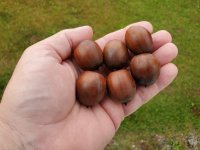
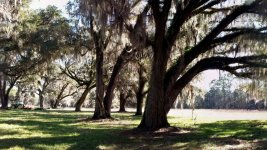
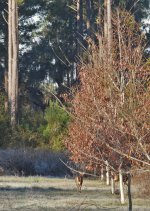
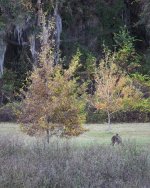


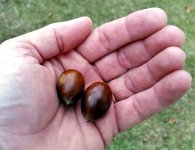
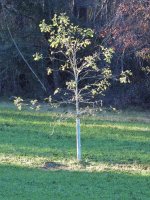
Live on my property of 112 acres outside Tallahassee so I get to really watch the deer acorn feeding habits closely.
My place is on old plantation land and my best guess is it has about 60 plus ancient live oaks. Blessed to have a couple of stands of swamp chestnut white oaks. Have some red oaks, lots of water oaks, and planted 50 or so sawtooths six years ago that saw about half of the trees producing well for the first time this year. I'm also weird enough to actually BITE each type of acorn to see what I think about their flavor -- bitterness vs sweetness.
Here's my take on them, pros and cons.
Swamp chestnut white oaks -- my favorite by far as deer will vacuum them up when available. Traffic is VERY heavy around trees when they're dropping. Taste is sweet and mild. Another plus is very large size of the acorns as takes just a few to make for a heavy hand-full. Biggest negative I've seen on my place is they only seem to drop heavily about every 3 years. When drop is heavy it's VERY heavy, but when light it's extremely light. Also will add if you have hogs in the area, it'll draw every dadgum one of them around for miles. We had a heavy drop last year and it led to me harvesting 78 hogs on my place.
View attachment 1197797
Live oak -- they DEFINITELY attract deer and when I've tasted them I've found them to be relatively sweet and having somewhat of an additional floral taste I don't get with other acorns. I've read literature stating they're in the white oak family, other articles stating red oak, and some references stating neither. I just know they don't taste as astringent as red oaks and water oaks to me. The trickier part to hunting them, at least at my place is once huge they have such expansive canopy that they tend to be found in the open or grouped at a fair distance from other live oaks nearby them so the deer prefer to feed under them at night versus exposing themselves during the day. I've yet to kill deer under them but have killed less wary hogs more than once. They're definitely a very common night time destination at my place (verified night after night with an infrared monocular) so I actually tend to hunt honey hole food plots I have located between bedding areas and the live oaks during evening sits.
View attachment 1197799
Sawtooth oaks - have some bitterness but also some sweetness and not as bitter as reds and water oaks. Deer do like them on my place and being an early dropper, they get them about as fast as they fall. Positives I really like about them are how fast they grow and produce. I've got some trees about 6" in diameter, 25 to 30' tall that produced acorns within six years of me starting them from pots as acorns.
View attachment 1197800
View attachment 1197801
I'm putting red oaks and water oaks together for my last vote BUT they DEFINITELY have their role too. They're far more bitter than the white oak acorns and live oak acorns, but in years where I've had the white oaks almost completely fail to drop any acorns the deer I've harvested have had stomachs full of water oak acorns and / or red oaks. I've watched them eat water oak and red oak acorns without delay during white oak failure years, but even when the white oaks produce heavily they'll just wait to hit the red oak acorns until after the white oaks are gone. Killed a nice buck in my food plot this year and about the ONLY thing he had in his belly was water oak acorns. So long story short, with enough acreage think having as wide a variety of oaks as positive can be a big plus, offering food / draw across as wide of timeline as positive AND giving insurance for when one species isn't as productive from year to year and another species can be loaded.
View attachment 1197811
Beautiful place, and fine buck! You have a nice buffet there for them.Semi-related note, back in 2016 when butchering the nicest buck I've killed on my place I noticed that its belly was full and after I removed it cut it open to find a number of perfectly WHOLE swamp chestnut white oak acorns in it.
Planted a couple of the acorns in pots, a year later transplanted them at the edge of two plots, and they've grown perfectly fine though slower than sawtooths.
May or may not live long enough to see them drop acorns, but still think it's neat to have them growing and hope years down the line someone else hunting them might know the story behind the trees. And even with acorns years in the future, deer are already regularly using the lower branches for licking/scraping spots.
View attachment 1197844
View attachment 1197846
View attachment 1197850
I’d be interested in knowing if the red oaks taste different after they’ve been through a freeze. To my understanding the tannins change in them after they’ve been through a frost or freeze.